69 Choral Score Reading
Our focus in this class will be four-part choral scores for soprano, alto, tenor, and bass (SATB). The soprano, alto, and bass lines sound as written. The tenor part is written in treble clef, but sounds one octave lower. Always play the tenor part in the register that it sounds (i.e., down one octave from how it appears).
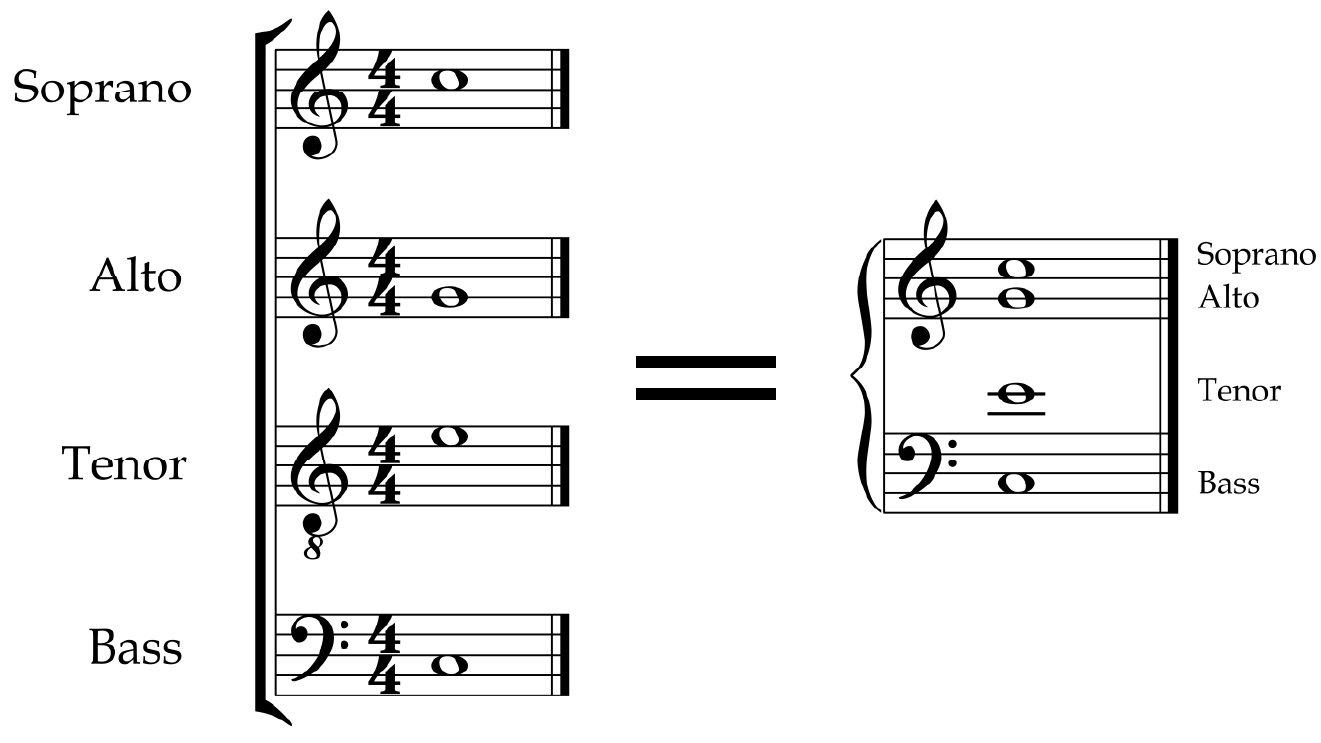
Ways to Practice Score Reading
Identify linear intervals: Say the first letter name, then speak the direction and distance of each successive interval in one part. For this exercise, ignore the written rhythm and proceed with each interval steadily in the same pulse. After speaking the intervals, repeat the exercise while also playing the notes.
For example, for the soprano part of 69.1: “D, up a fourth, same, up a third, same, down a second, down a second,” etc.
Identify vertical distance between parts: Choose two parts and name the interval distance between them (don’t worry about quality). If the interval is greater than an octave, reduce it to the interval an octave smaller (e.g. instead of eleventh, say fourth).
For example, for the alto and tenor parts of 69.1: “Same, third, third, fourth, fourth, third, fourth,” etc.
Practice downbeats: Play all the notes on the downbeat of each measure, then look ahead, preparing your hands for the next downbeat.
69.1 | All Hail the Power of Jesus’ Name

William Shrubsole
69.2 | Be Thou My Vision

SLANE
69.3 | Come Thou Fount

NETTLETON
69.4 | Fairest Lord Jesus
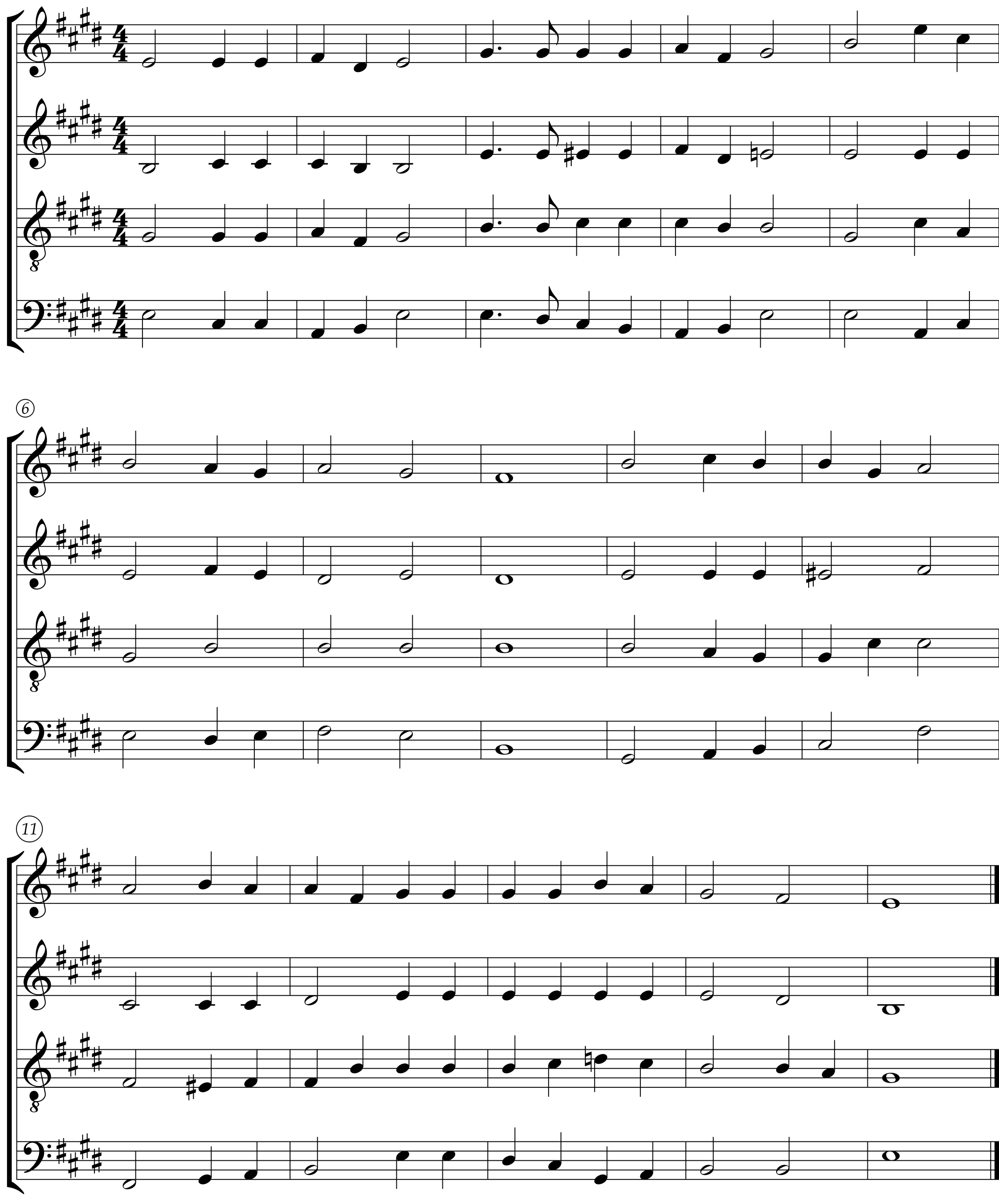
CRUSADERS’ HYMN
69.5 | For the Beauty of the Earth
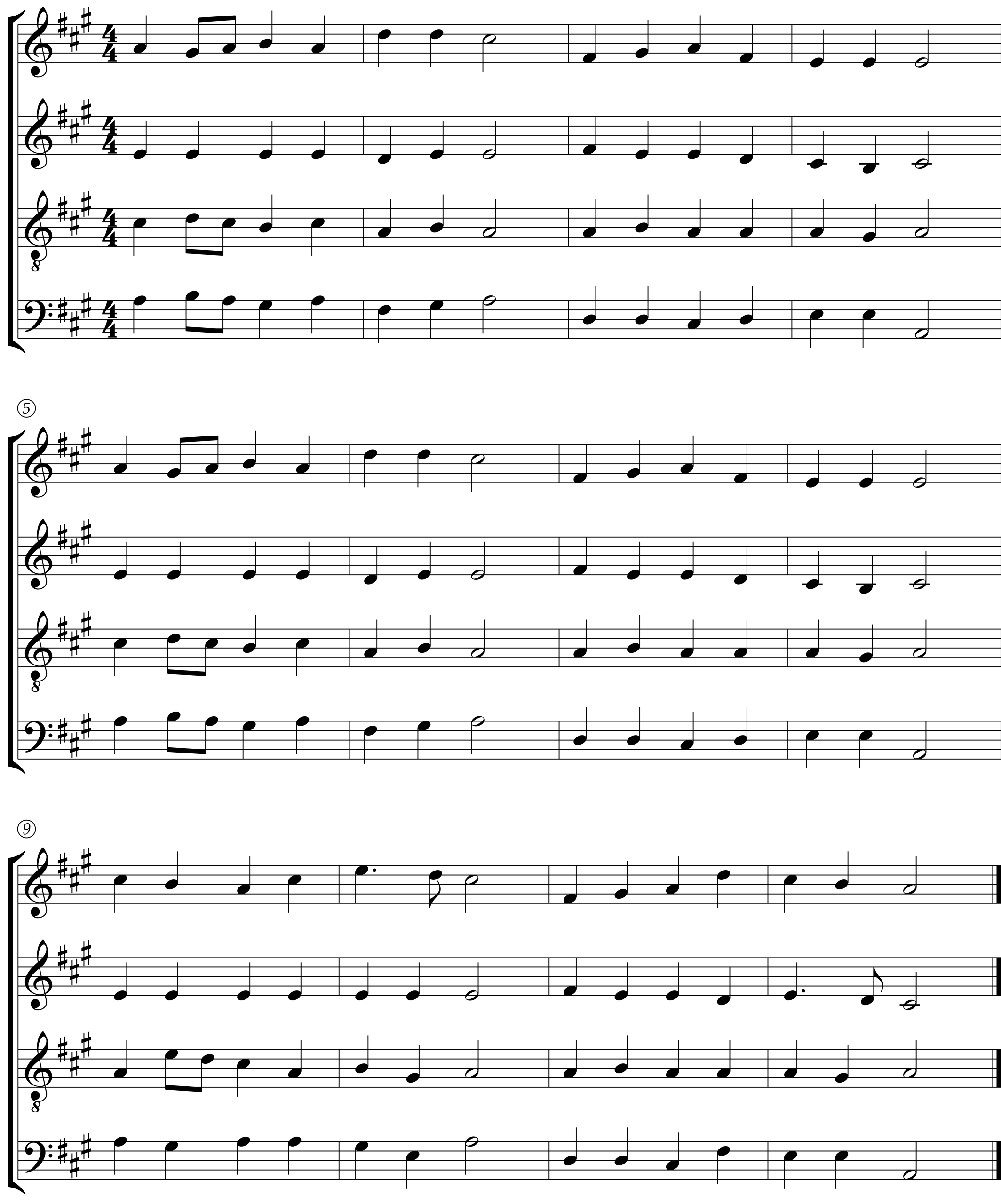
Conrad Kocher
69.6 | Holy, Holy, Holy
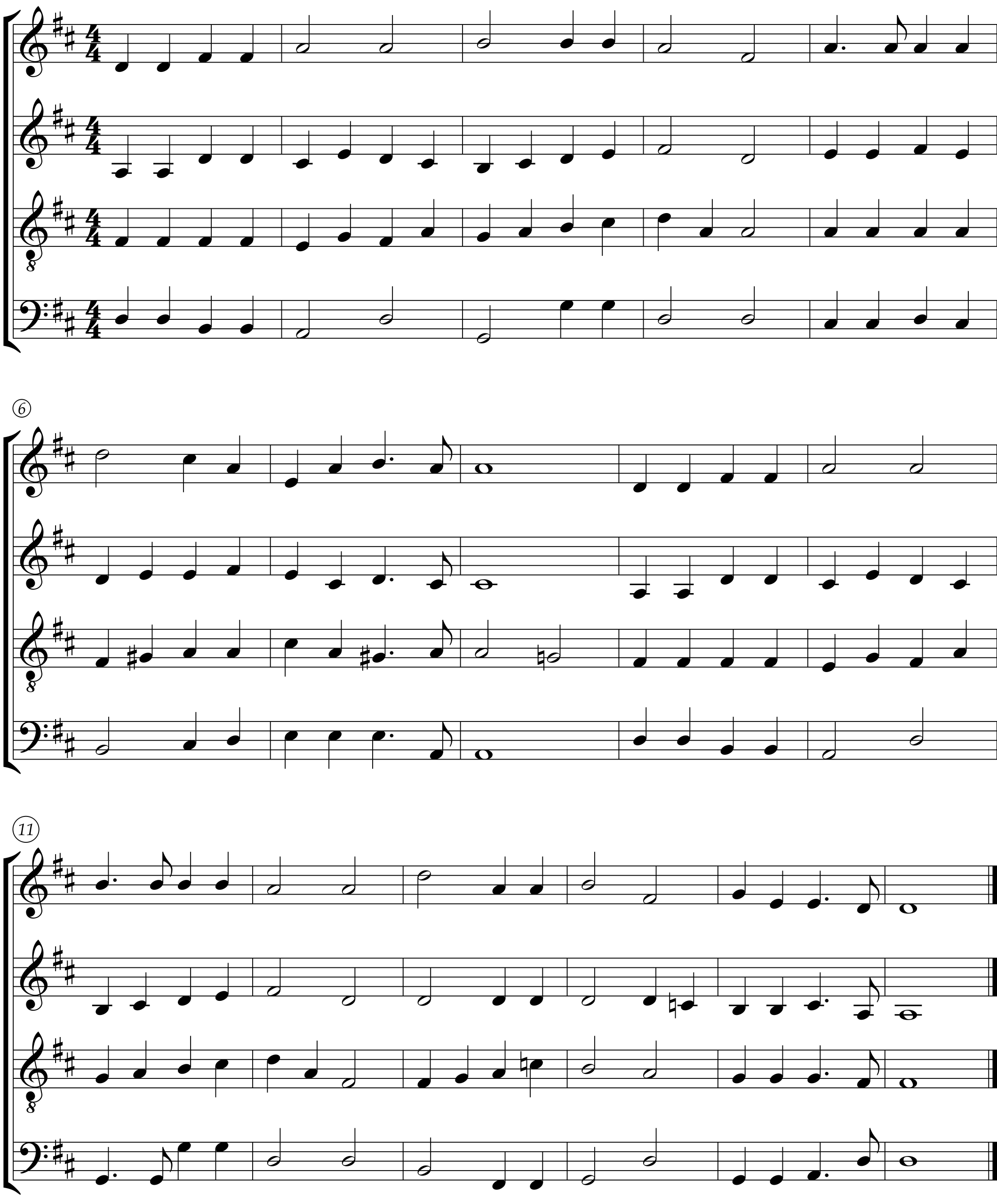
John B. Dykes
69.7 | Nearer My God to Thee

Lowell Mason
69.8 | O Worship the King
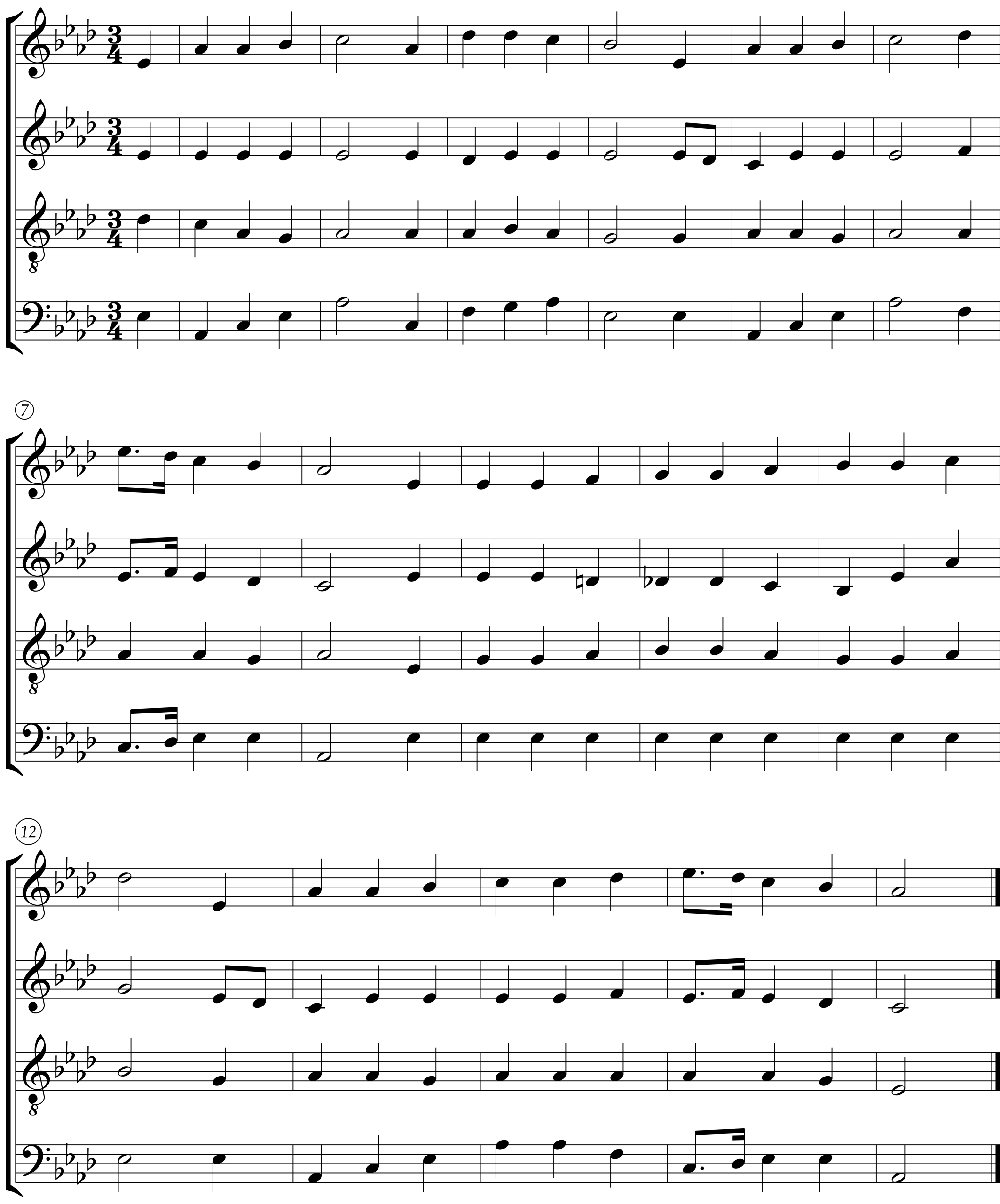
LYONS
69.9 | Take My Life and Let It Be
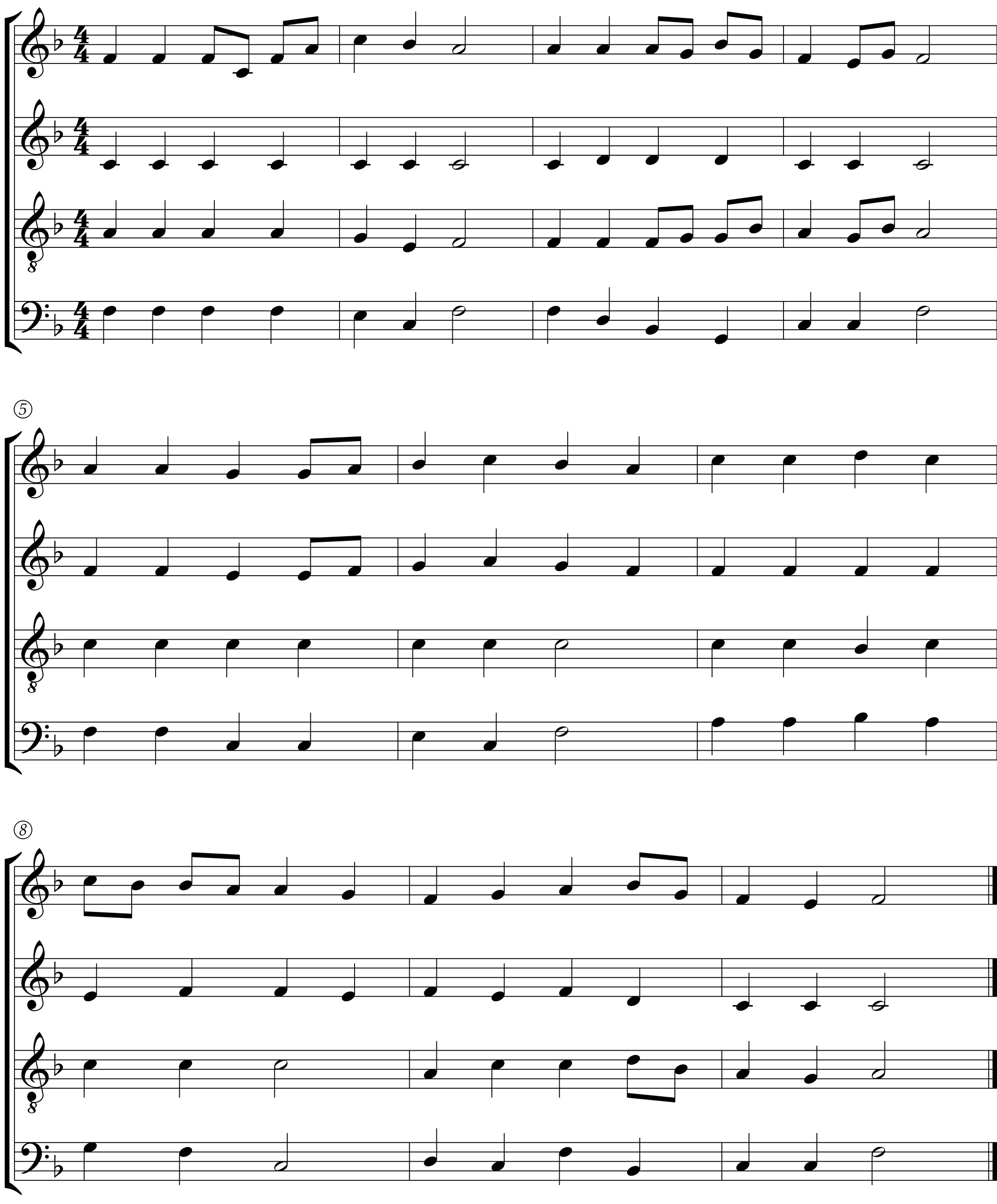
W. H. Havergal
69.10 | ‘Tis So Sweet to Trust in Jesus

William J. Kirkpatrick